A good waterproof jacket is one of the essential pieces of kit if you’re heading for the hills in winter.
UK weather is unpredictable and during our prolonged testing of the jackets in this review we encountered gales, snow, hail, heavy rain and the occasional sunny interval, with temperatures between 10C and -6C, with a windchill making things feel much colder.
A waterproof needs to keep out the rain and wind, while still allowing free movement and minimising the build-up of moisture which is inevitable due to exertion on even fairly moderate terrain. It’s important to recognise even the best and most breathable jackets can’t immediately transfer all the perspiration most people produce when working hard getting up the hill.
So be prepared for some discomfort from clamminess while you’re on the move. But warm and wet is better than cold and wet, and keeping out driving rain and snow is important in avoiding risking going into hypothermia. I’ve found that, as the effort subsides on a walk, this allows the built-up moisture to wick outwards so, by the end of the day, there will be less clamminess. The most breathable jackets achieve this more quickly than poorer performing models.
The jackets in the test should be worn as part of a layered system, with a baselayer and midlayer providing both warmth and wicking of sweat away from the body. With one exception, none of the waterproof jackets in the test provide insulation, though those with thicker fabrics did provide a little more warmth, usually at the cost of increased weight.
The waterproof jackets were tested for how well they performed, how comfortable they were in use, including breathability, and for useful features, quality and value for money. We also give a sustainability rating for both the garment and the brand’s wider policies.
Alpkit Definition
Price: £249.99
Colour: blue
Weight: 569g
Waterproofing: PU membrane
Country of manufacture: China
Recommended wash: 30C technical wash or pure soap
Women’s version: yes
Sizes: men’s, S-XXL; women’s 8-18
Alpkit say they have designed the Definition for winter days in the Scottish mountains and year-round Munro bagging.
The jacket feels robust, with three-layer material featuring an abrasion-resistant nylon outer fabric. It’s quite stiff and produces a little noise on the move. Alpkit uses an unbranded waterproof membrane in the Definition. Its performance stats are good, with a claimed 30,000 mm hydrostatic head and 20,000 MVTR breathability.
The jacket has all the features you need for winter outings in the UK or even further afield in alpine conditions. The main water-resistant zip is backed by a storm flap and has a double, two-way puller. There are two large zipped pockets, which sit clear of the rucksack hipbelt area. These are big enough to take an OS map. There’s also a zipped chest pocket which is a good size. The jacket also has a small, zipped interior pocket, big enough to slip in a smartphone.
Rather than pit zips, the Definition has twin zipped side vents. These sit under the sleeve area and are easier to open and close than zips in the sleeves, which can be fiddly to use and access, but the side vents do have a slight tendency to gape open, with the chance of letting in rain in crosswinds.
There’s a chinguard on at the top of the zip, which comes quite high on the face, to the mouth area. The hood is large enough to wear with a helmet underneath. Adjustment comes via a rear halo shockcord and spring toggle, which was easy to adjust, even when wearing gloves. Front adjustment is by a pair of cords with concealed spring buttons, which again worked well. The hood has a stiffened and wired peak. It stayed in place when walking into strong headwinds.
The sleeves are articulated, and have slightly flared cuffs with gussets to make it a bit easier to tuck gloves under and it was possible to wear thick winter gloves tucked into the cuffs. They have hook-and-loop strips for adjustment.
Hem adjustment is via two hip shockcords with spring buttons. These tuck away under the hem to help stop snagging.
Cut of the jacket is fairly snug to the body, so will suit winter climbers as well as walkers. The jacket didn’t ride up when reaching up for holds.
Alpkit said the jacket has been designed with durability in mind, one of the key factors in sustainability. The Definition also uses PFC-free durable water treatment.
Alpkit has built its business on providing good-value gear without compromising performance, and the Definition fits that description. It’s nicely cut, with durable fabric and good quality fittings. The unbranded waterproof membrane has performance figures comparable with many well known membranes.
Sustainability is good, with use of PFC-free treatments and durable fabrics. Alpkit has gained B Corp certification. Its electricity use is from 97 per cent renewable sources and it uses 93 per cent recyclable content in its packaging. The company’s Reduce, Reuse, Repair, Recycle scheme undertook more than 2,000 repairs. It also runs the Alpkit Foundation which as supported 900 projects.
Best uses: winter hillwalking; all-year hillwalking; mountaineering; country walking; trekking.
Performance 26/30
Comfort 26/30
Features 8/10
Quality 7/10
Value for money 8/10
Sustainability 8/10
Total score: 83/100
Berghaus Ridgemaster 3L
Price: £300
Colour: black
Weight: 524g
Waterproofing: Gore-Tex Performance Shell
Country of manufacture: Vietnam
Recommended wash: 30C non-biological
Women’s version: no
Sizes: men’s XS-3XL
This is the updated Ridgemaster, introduced this season and made from Gore-Tex three-layer Performance Shell fabric, with a combination of polyester and polyamide material.
The Ridgemaster has a robust feel, with fairly stiff fabric which was a little noisy while on the move.
The main zip has a single puller and is backed by a storm flap and has a single press-stud at the bottom. There’s a soft chin guard at the top.
The jacket has twin pit zips, which are a good length and provided ventilation when needed. There are two good-sized chest pockets with water-resistant zips, and two hip pockets, again with water-resistant zips, which are covered by storm flaps. There’s also a small, zipped, stretch mesh pocket inside the jacket, large enough for a smartphone.
The hem has shockcords to cinch it in, with twin spring toggles.
The hood has a single adjuster at the rear, which combines a halo-type elasticated cord tethered to the sides of the hood, so it pulls in around the face when tightened. This was less effective than a separate front adjuster and left small gaps at the side of the face when tightened. The hood did, however, stay up in strong headwinds though it had to be tightened fully, and turned well with the head. It’s big enough to go over a climbing helmet and has both a stiffened peak and a wired section to shape it to provide the best cover for the face.
The sleeves are articulated and allow good upward reach when grabbing holds on more technical terrain. The jacket didn’t ride up. There are hook-and-loop tabs to adjust the cuffs. These were just wide enough to go over the winter gloves we use.
The Ridgemaster 3L is cut fairly long, so provides good protection against the weather, but is an athletic enough design to be used on technical routes and winter mountaineering trips.
The Berghaus jacket kept the rain out and had a good quality feel, ensuring confidence in bad weather. Breathability was good. It’s a nicely designed jacket with all the features to keep you protected in typical UK weather.
The jacket uses bluesign-approved materials, which are environmentally friendly. Berghaus has pledged to reduce its carbon emission by 25 per cent by 2025 and reach net zero five years later. It says it is planting 2 million trees each year until at least 2025. Parent company Pentland has appointed a positive business director to oversee its effects on society.
Berghaus says it makes its products to last, to enable the best sustainability. It also offers a free repairs service for its clothing. It recycles clothing at the end of its life or donates garments to four organisations to continue their use. It uses 100 per cent renewable energy in its offices. It’s also a member of the European Outdoor Conservation Association.
Best uses: winter hillwalking; all-year hillwalking; mountaineering; country walking; trekking.
Performance 27/30
Comfort 25/30
Features 8/10
Quality 8/10
Value for money 7/10
Sustainability 7/10
Total score: 82/100
Craghoppers Dynamic Jacket
Price: £120
Colour: blue/white
Weight: 659g
Waterproofing: AquaDry membrane
Country of manufacture: Bangladesh
Recommended wash: 30C Craghoppers Aquadry or pure soap
Women’s version: yes
Sizes: men’s S-XL; women’s 8-20
The Dynamic Jacket’s styling has a snowsports look to it, with two shades of blue plus white panels on the shoulders.
It uses the brand’s Dynamic 12000 mesh which Craghoppers says reflects the body’s infrared rays. The fabric has a slight stretchiness thanks to its 9 per cent Elastane content in the lining. The shell is polyester, with PFC-free durable water-resistant treatment. The jacket also has Craghoppers’ AquaDry Membrane waterproofing. The company says this offers proofing to 10,000mm static head, plus 10,000g/m2/24h for breathability.
The material is fairly soft and less noisy than some of the jackets in the test.
The main zip, which has a single puller, is water-resistant and is backed by a storm flap. The jacket’s hem can be cinched with its shockcord and single spring toggle.
The Craghoppers jacket has two zipped handwarmer pockets with mesh lining. These sit fairly well up on the garment, clear of the rucksack hipbelt area. There’s also a zipped chest pocket, again with mesh lining. Inside the Dynamic is a single, zipped pocket.
The sleeves’ cuffs have hook-and-loop tabs for adjustments, but the cuffs weren’t flared and I couldn’t tuck my thick winter gloves inside them, so they had to go over the jacket cuffs. There’s reflective piping and logo details on the shoulders.
The hood has a semi stiffened peak and rear halo adjuster, combined with front adjusters each side of the face, with spring toggle locking. The hood wasn’t over large and, when tightly adjusted with the rear halo cord, left more of the face exposed. It did seal well around the face though and turned well when cinched in. It’s just about large enough to take a climbing helmet, though it was a snug fit, so if you’re wearing a helmet, it’s probably best to put it on over the hood.
The Craghoppers jacket was middling in weight and felt fairly thick, due to its dual-layer construction with a mesh liner. This gave it a little extra warmth – welcome on cold days but less so on milder days when working hard uphill.
It kept out the rain and was reasonably breathable. It also resisted wind well. Cut is standard rather than athletic, and the jacket did ride up a little when reaching up on more technical routes. Length is fairly standard, extending to the thighs.
The Craghoppers Dynamic comes with a value price tag, the joint-lowest in the test. It’s a general-purpose jacket, happy in the UK winter countryside, though not really at its best in the worst winter mountain weather or for fast and light mountain activities.
The design also makes it a good choice for use in urban conditions in winter, without looking too technical.
Craghoppers uses about 70 recycled bottles in the men’s version and 60 in the women’s during manufacture of the Dynamic. The durable water-resistant treatment of the outer shell is PFC-free, and uses Ecoshield plant-based treatment. The garment is covered by the brand’s Guarantee for Life. The company says it uses minimal water in its dyeing process. It imports its goods to Liverpool, reducing road miles by 400,000 a year and has zero landfill waste from its facilities. It says it is committed to net zero by 2050.
Best uses: winter country walking; trekking; hillwalking; urban wear.
Performance 23/30
Comfort 23/30
Features 8/10
Quality 7/10
Value for money 8/10
Sustainability 7/10
Total score: 76/100
Keela Prosport Jacket
Price: £149.95
Colour: ochre
Weight: 803g
Waterproofing: Dual System Protection
Country of manufacture: not stated
Recommended wash: 30C pure soap
Women’s version: yes
Sizes: men’s XS-3XL; women’s 8-20
The Prosport is a conventionally styled jacket that uses Keela’s System Dual Protection to keep the weather out and the condensation minimised.
It makes for a fairly thick jacket and the Keela garment was the second-heaviest in the test.
The fabric is soft feeling and not as noisy as some. It also has four-way stretch, which allows good movement on more technical routes. Fit is regular. Length is standard, and the Prosport has a scooped back
The lining of the jacket is a very fine mesh construction, which helps reduce moisture build-up.
The Prosport’s main zip is protected by a storm flap which uses press-studs to secure it. I found these less convenient than hook-and-loops strips, and a bit more difficult to fasten when wearing gloves. There are soft tricot areas at the top of the zip and in the chin area for added comfort. The zip is two-way, with double pullers.
The jacket has twin pit zips which have storm flap covers, secured by hook-and-loop strips. These worked well, allowing some ventilation when on the move, without letting in the rain. There’s also hem adjustment via a shockcord with twin spring toggles.
There are two chest pockets, located away from the hipbelt area, and these again are protected by storm flaps. The Keela jacket also has a smaller chest pocket with water-resistant zip. Inside this is a little webbing strap with a thin loop at the end, secured by a spring-button toggle. So items such as keys or a compass can be attached to it and released by pressing the button if needed. The jacket also has a large zipped pocket, big enough for a map, which is accessed under the main storm flap.
The sleeves are articulated and have hook-and-loops strips at the cuffs for adjustment. The cuffs were just wide enough to fit over my thick winter gloves.
The hood has a rear halo adjuster with spring toggle and there are twin front cord adjusters. The peak has a wire adjuster and the hood can be rolled up and secured using a flap with press-stud closure. It is big enough to be worn with a helmet.
Out on the hill, the Keela jacket kept out the wind and rain and provided a little more warmth than some of the thinner jackets. Breathability was good. The hood stayed up well in a headwind, but the adjuster cords could be felt against the face when cinched in hard. It moved with the head when turned.
Keela avoids the use of PTFE laminates in the jacket and says it sources materials from sustainable sources. It also says durability is good, leading to a longer life for garments and fewer ending up in landfill. The company has signed up to the Sustainable Clothing Action Plan. It also offers, at a small cost, a repair service for its clothing.
The Prosport offers good value for money, with all the features you need to keep you protected on Britain’s winter hills. It’s fairly traditional in design, so will appeal to those who prefer that look to a slimmed-down minimalist look.
Best uses: winter hillwalking; trekking; mountain walking.
Performance 24/30
Comfort 25/30
Features 9/10
Quality 7/10
Value for money 8/10
Sustainability 6/10
Total score: 79/100
Maier Sports Gravdal XO 2.0 M
Price: £299.95
Colour: red/grey
Weight: 1,104g
Waterproofing: mTEX 20.000
Country of manufacture: China
Recommended wash: 30C short wash
Women’s version: yes
Sizes: 46-64 (XS-5XL); women’s 34-52 (XS-5XL)
The Gravdal XO 2.0 is a beefy jacket, the heaviest in the test, with a leaning towards a snowsports look.
The fabric is soft and non-rustly and the jacket’s waterproofing comes from an mTEX membrane, rated at a respectable 20,000mm static head. It also has comfortemp filling, a biodegradable lyocell-based insulation, which helps make the Maier jacket one of the warmest in the test.
The fit is standard, and the Gravdal is fairly long, with a slightly scooped back. The German brand offers a large range of sizes, so it should be possible to get a jacket that fits well.
The main zip is backed by a storm flap and has a single puller. There are two zipped handwarmer pockets, covered by flaps. Inside these are the shockcord adjusters for the jacket’s hem. There are also spring toggles on the inner side of the hem.
The jacket has a zipped chest pocket, again covered by a flap, on the left side. On the right side is a smaller pocket with an angled opening and water-resistant zip. Inside the jacket is another zipped, good-sized pocket.
The Gravdal also has a powder skirt to keep out the snow on the slopes or when winter mountain walking. It has twin press-stud fastening and can be removed by unzipping it.
There are twin pit zips with a stretch mesh lining when opened, which worked well.
The sleeves’ cuffs have tabs with hook-and-loop fastening for adjustment. There are also inner elasticated cuffs that help keep out draughts. The left sleeve has a small zipped pocket for items such as a ski pass or compass.
The hood can be detached by unzipping and unfastening two press-studs. There’s rear halo adjustment with a spring toggle and the hood also has two front adjusters with shockcords and spring toggles, along with two hook-and-loop tabs at the back for a little volume adjustment. The hood was big enough to accommodate a helmet. The peak isn’t stiffened, so tended to flap around in strong winds.
The Sports Gravdal XO 2.0 provided protection against wind and rain and also provided warmth on winter days on the hill. It’s certainly no lightweight, but has all the features needed and quality was good. Styling was traditional and fit was standard, with quite a long design. It has a snowsport feel and doesn’t feel out of place in urban environments too on those cold, wet winter days.
Breathability was quite good, considering it’s a thick winter jacket.
Sustainability is good. The durable water-resistant treatment is PFC-free and there’s 58 per cent recycled polyester in the fabric. The comfortemp filling is 100 per cent biodegradable, and Maier says its production method is efficient in using less water and adhesive.
Best uses: winter hillwalking; trekking; winter country walking; snowsports.
Performance 24/30
Comfort 24/30
Features 8/10
Quality 8/10
Value for money 7/10
Sustainability 8/10
Total score: 79/100
Montane Meteor Jacket
Price: £120
Colour: black
Weight: 327g
Waterproofing: Pertex Shield
Country of manufacture: Myanmar
Recommended wash: 30C
Women’s version: yes
Sizes: men’s S-XXL; women’s 8-16
Montane’s Meteor Jacket, on the other hand, is aimed at those who like to travel light and fast.
It’s among the lightest in the test and has a clean, simple design. Despite its lightness, the nylon fabric feels robust. It uses Pertex Shield for waterproofing, which has a rated hydrostatic head of 10,000mm.
The Montane jacket has twin pit zips with single pullers which I found useful in providing some ventilation while on the move uphill. There are two zipped handwarmer pockets with mesh lining and the jacket’s hem can be cinched in using the twin shockcords with spring toggles.
The main zip has a storm flap backing and there’s a slender tricot chinguard strip at the top of the zip.
The sleeves have hook-and-loop adjustment at the cuffs, which were just flared enough to allow them to go over thick winter gloves.
The hood has rear halo adjustment secured by a spring toggle, along with two front shockcords to cinch it in around the face. The peak is wired and the hood stayed up well in a headwind and kept the weather out, also turning well with the head. The hood was too snug to use over a helmet, so you’ll have to place the helmet over the hood if need be.
The Meteor has small reflective detail on the sleeves. The jacket is an athletic fit with scooped back.
On sustainability, Montane says it uses C6 PFCs in its durable water-repellent treatments, but is not yet satisfied that adequate performance can be achieved by PFC-free treatments. It says it puts durability at the heart of its garments and offers a paid-for repair service.
The Meteor is very much a minimalist jacket and won’t provide any extra warmth on the hill, but it kept out the wind and rain during our testing and was very light in the pack when not in use, taking up very little space too.
It’s good when moving fast and the jacket suits those who take a lightweight approach to days on the hill. Breathability was fairly good, but not as efficient as some of the other membrane jackets.
It also came with joint-lowest price tag, so won’t blow a large hole in your outdoor gear budget. The Montane jacket will appeal to those who like a simple, athletic design that tips the scales at the lower end.
Best uses: hillwalking; trekking; winter country walking; winter fast-moving outings, running.
Performance 25/30
Comfort 25/30
Features 6/10
Quality 7/10
Value for money 8/10
Sustainability 5/10
Total score: 76/100
Rab Kangri GTX
Price: £275
Colour: blue
Weight: 541g (size L)
Waterproofing: Gore-Tex
Country of manufacture: China
Recommended wash: 40C non-biological liquid or pure soap
Women’s version: yes
Sizes: men’s S-XXL; women’s 8-16
The Kangri is a general-use mountain walking jacket, with a robust feel and, in this updated version, use of recycled materials.
It’s a conventionally styled waterproof, with a fairly long cut and scooped rear hem.
The three-layer fabric is quite stiff and rustly when on the move. It does feel pretty bomb-proof though, and should give long service.
The water-resistant two-way main zip has dual pullers and is backed by a storm flap. There’s a thin tricot chin guard at the top and a single press-stud at the bottom to secure it. The main puller has a usefully large plastic loop that was useful when zipping up while wearing gloves.
The jacket’s hem can be cinched in, using the shockcord with easy-to-use spring toggles. There’s also an upper adjuster at the waist area, with a single spring toggle. This can be used to tighten up the jacket across the lower back to help keep out draughts.
The Kangri GTX has water-resistant pit zips with twin pullers, which worked well in allowing some ventilation when the pace increased, without letting in the rain to any degree. The sleeves are articulated and the cuffs have hook-and-loop strips for adjustment. The cuffs are flared enough to allow them to fit over thick winter gloves.
The jacket has two pockets on the outside, with water-resistant zips. These are sited above the hip-belt area and are a good size, allowing a map to be accommodated. Inside the Rab jacket is a smaller stretch mesh pocket with a zip. It’s about the right size to take a smartphone.
The hood has a stiffened and wired peak and is adjustable at the rear with a halo shockcord with spring toggle. At the front are twin shockcord adjusters, which allow the hood to be pulled in nicely to the face to keep out wind and rain. The hood is large enough to use with a helmet and turned well with the head. With the hood in use and the jacket fully zipped, the jacket covered the mouth, coming to just under the nose.
The Kangri GTX felt very reassuring in use in poor conditions. The fabric kept the rain out well and also had good breathability. The only drawback of the relatively thick 70 denier fabric was its stiff feeling and the accompanying noisiness, especially noticeable in the hood. Despite this, the jacket was still relatively light – sub 550g for the large version received for testing. The Gore-Tex fabric has a 28,000mm static head rating and also a good moisture transfer rating, and the jacket coped well with some very wet weather during testing.
Quality of the Rab jacket was good, too, and it’s well designed. For a versatile mountain-walking waterproof, the Kangri GTX fits the bill. Fit is standard, rather than athletic. The jacket we tested was a large size rather than medium like the others in the test, so it’s hard to comment on whether sizing is true. It’s fairly packable too, though not quite as much as some of the really lightweight jackets. Its robust construction resisted scrapes well and should give long service, a plus in the sustainability stakes, as is the Rab garment’s use of recycled material.
Rab’s parent company is ‘climate neutral’, offsetting its emissions via carbon credits, including a Zimbabwean forest, support for a hydropower plant in Vietnam, and providing efficient cooking stoves for women in Nepal.
By 2024 it says it’s aiming to use renewable energy in all its owned and leased facilities and by 2025 using recycled or renewable packaging. By 2030, it says it aims to use 100 per cent renewable or recycled materials in half its fabrics. The same year, it has set a target of a 42 per cent reduction in emissions from its direct operations. It has also put in place measures to reduce its impact on the environment in its vehicles and work locations. It has also started using paper or cardboard packaging when delivering its goods to customers.
Best uses: winter hillwalking; trekking; winter country walking; mountaineering.
Performance 26/30
Comfort 24/30
Features 7/10
Quality 8/10
Value for money 7/10
Sustainability 8/10
Total score: 80/100
Salewa Moiazza Jacket
Price: £210
Colour: black/dark blue
Weight: 307g
Waterproofing: Gore-Tex Paclite
Country of manufacture: Bangladesh
Recommended wash: 30C neutral soap
Women’s version: yes
Sizes: S-XXL (both versions)
This minimalist jacket from the Italian South Tyrol brand is the lightest in the test and is pared back to exclude any unnecessary detail.
But its Gore-Tex Paclite construction offers complete protection against the elements, and good breathability and, despite its light weight, feels robust.
The Moiazza has clean, athletic-cut lines, with a two-tone colourway and contrast detail in the zips. The back has a scooped hem.
The main zip has a single puller and is covered by a storm flap. The hem can be cinched in with a shockcord with twin spring toggles.
There are two reasonably sized chest pockets with water resistant zips. The sleeves are shaped to allow the wearer to reach up easily and have hook-and-loop adjusters at the cuffs, which are just flared enough to go over winter gloves.
The hood has just rear halo adjustment and a semi-stiffened peak. It was just big enough to wear over a helmet, but that did make the chin area quite tight, so it’s probably best worn under the helmet. There’s no front adjustment of the hood, which relies solely on the rear adjuster, so the wind does sneak in at the side of the face when walking into a headwind, but it did stay up and turned well with the head. When fully zipped up, the neck and collar section comes up to the mouth.
Out on the hill, the Salewa jacket kept out the rain well. The two-layer Gore-Tex Paclite, with a static-head rating of 28,000mm, kept the rain at bay on the wettest of days, and also had good breathability. The fabric has a fairly soft feel and wasn’t over rustly. The jacket also packs down small for the rucksack.
The Moiazza jacket won’t provide much extra warmth, but it’s principally aided at fast movers who want protection from mountain weather. If it’s bells and whistles you’re after, this isn’t the jacket for you. Its minimalist design helps keep down the weight, yet it offers the reassurance of keeping out the rain, snow and wind. The simple design makes it a good choice when tackling technical terrain, where freedom of movement for holds and stepping up is important.
The jacket’s sustainability credentials are good too, with a PFC-free durable water-repellent treatment. The company says its three photovoltaic plants provide more energy than its office and warehouse need, and the excess is fed into the grid. There’s a piping system to store and distribute thermal energy. Salewa and its parent company Oberalp is part of a European Outdoor Group research project looking at how to reduce the number of microplastics released when synthetic clothes are washed. Oberalp operates repair workshops at several locations.
The Salewa Moiazza is a good looking jacket with an athletic cut, which will appeal to those who want a minimalist design for fast and efficient movement in the mountains. Performance and comfort were good as was the quality of the design and manufacture.
One thing to note: the Moiazza was quite a snug fit, so you may need to consider trying a size larger than your normal choice.
Best uses: winter hillwalking; all-year hillwalking; mountaineering; fast and light activities; trekking.
Performance 27/30
Comfort 26/30
Features 6/10
Quality 8/10
Value for money 7/10
Sustainability 7/10
Total score: 81/100
The best in test jacket was Alpkit’s Definition, which had a wealth of features and nice design touches, offering all the necessities for keeping you warm on the winter hills and mountains, and at a reasonably competitive price.
Close behind was the Berghaus Ridgemaster 3L, again with good features and quality. Its main drawback was poorer performance of the hood.
I liked the clean and minimalist design of the Salewa Moiazza, which performed very well and is the best choice for hillgoers who want minimum weight and pared-down features, yet with good performance.
The Rab Kangri GTX is a very traditional design, with good performance, aimed at the all-year-round hillwalker.
The Maier Sports Gravdal XO 2.0 offered extra warmth and is a good choice for those who enjoy hillwalking and the occasional venture into snowsports. The Keela Prosport is another traditional design aimed at hillwalkers who want protection from the elements at a value price.
The Montane Meteor and Craghoppers Dynamic will suit those on a limited budget. The former will suit fast movers while the latter has a design that doesn’t look out of place on the High Street as well as on the country trail.
- All the jackets were supplied to grough by the brands.
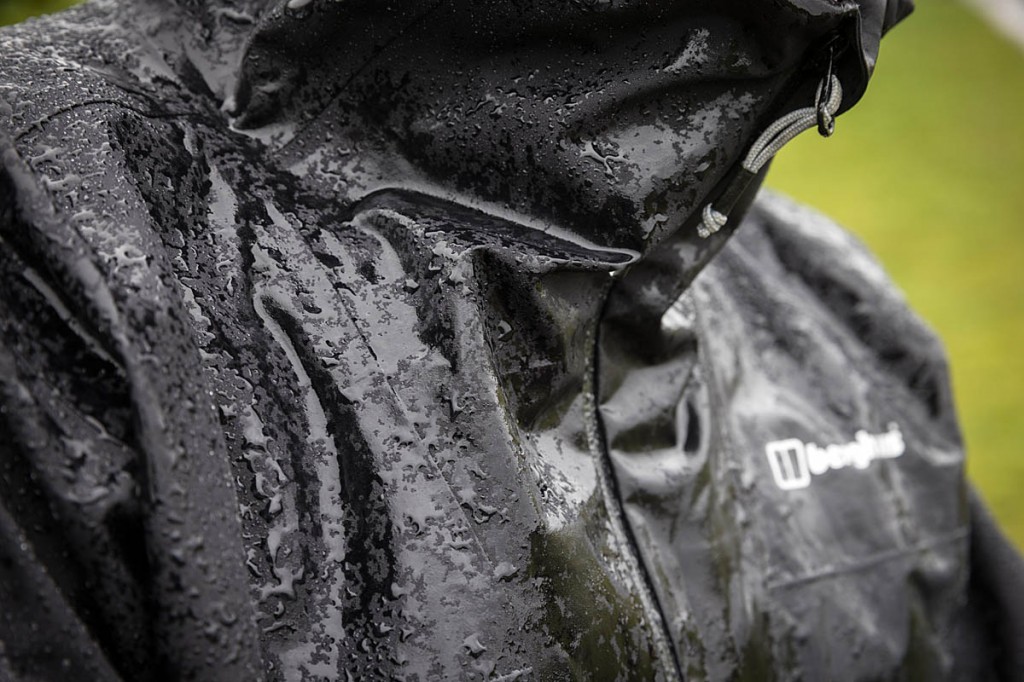
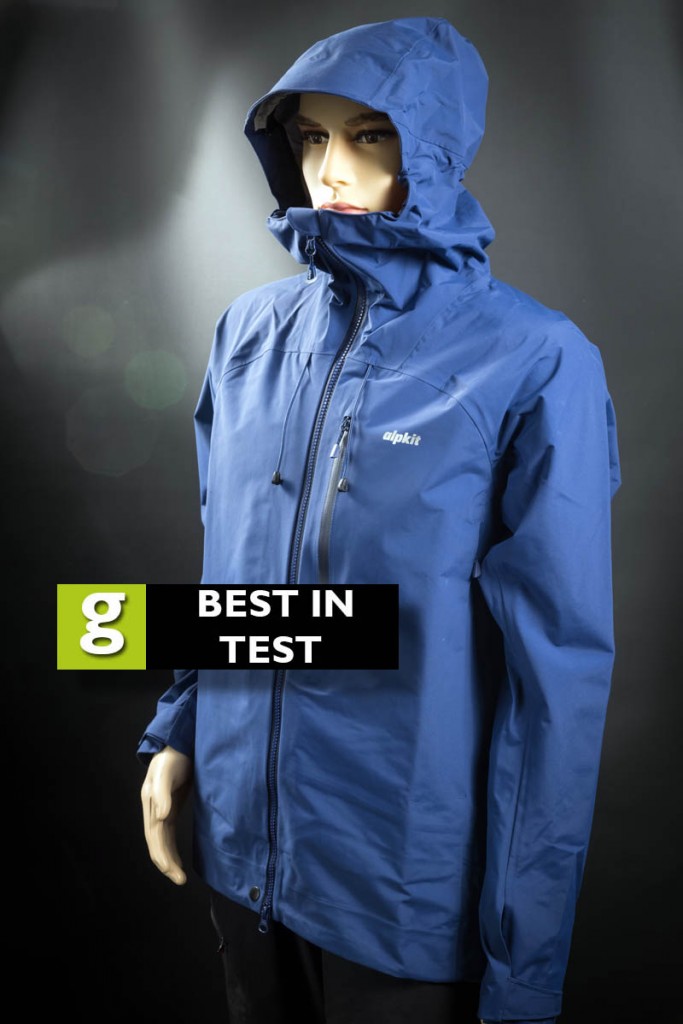
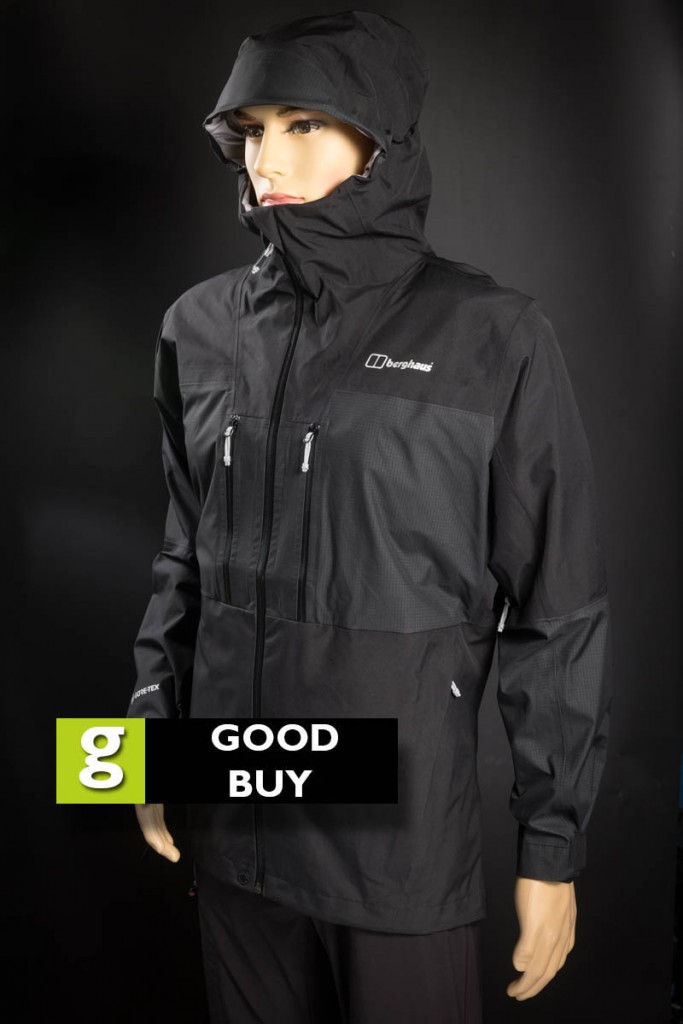
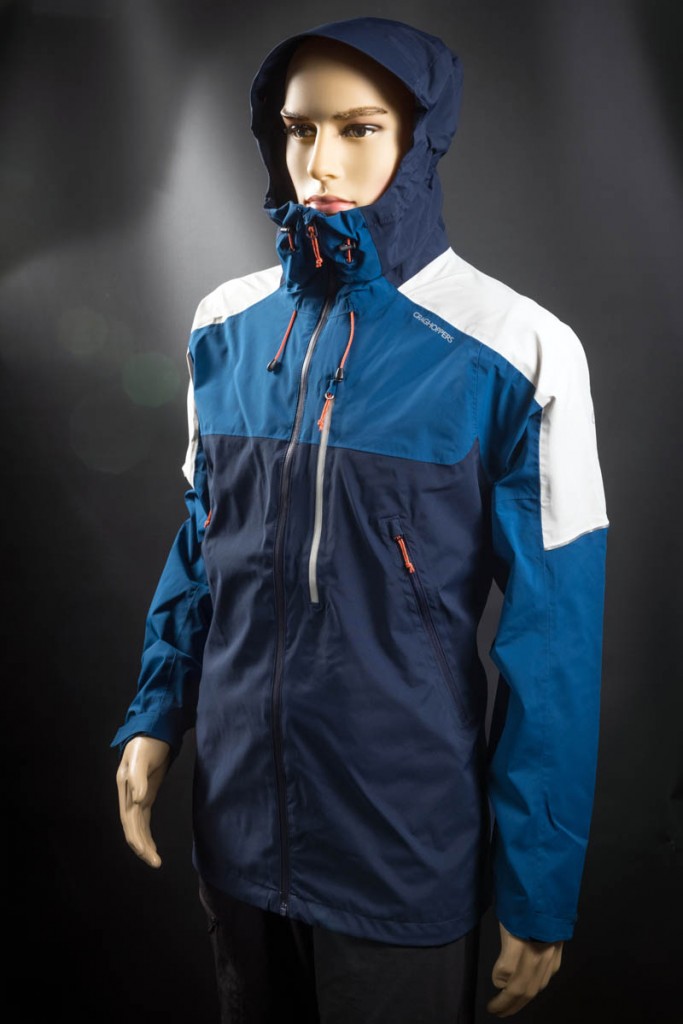
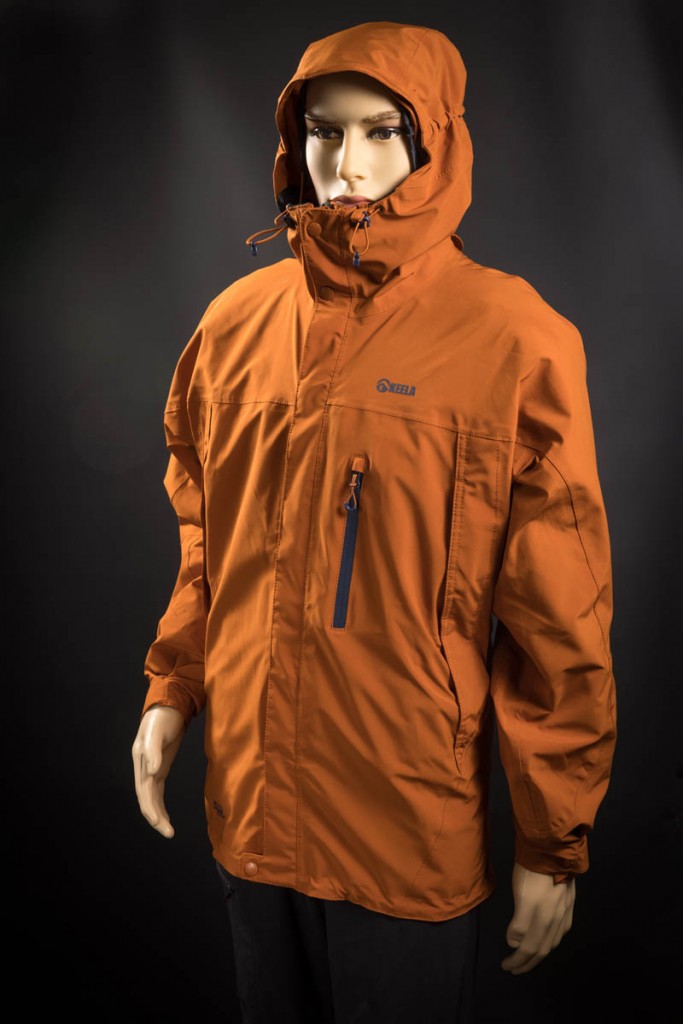
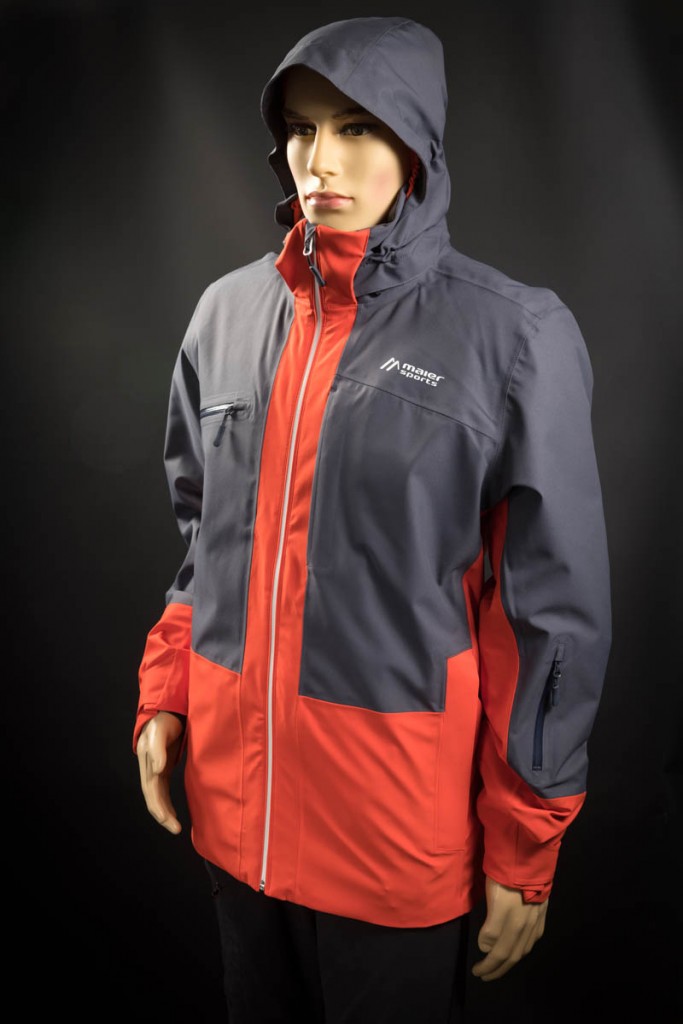
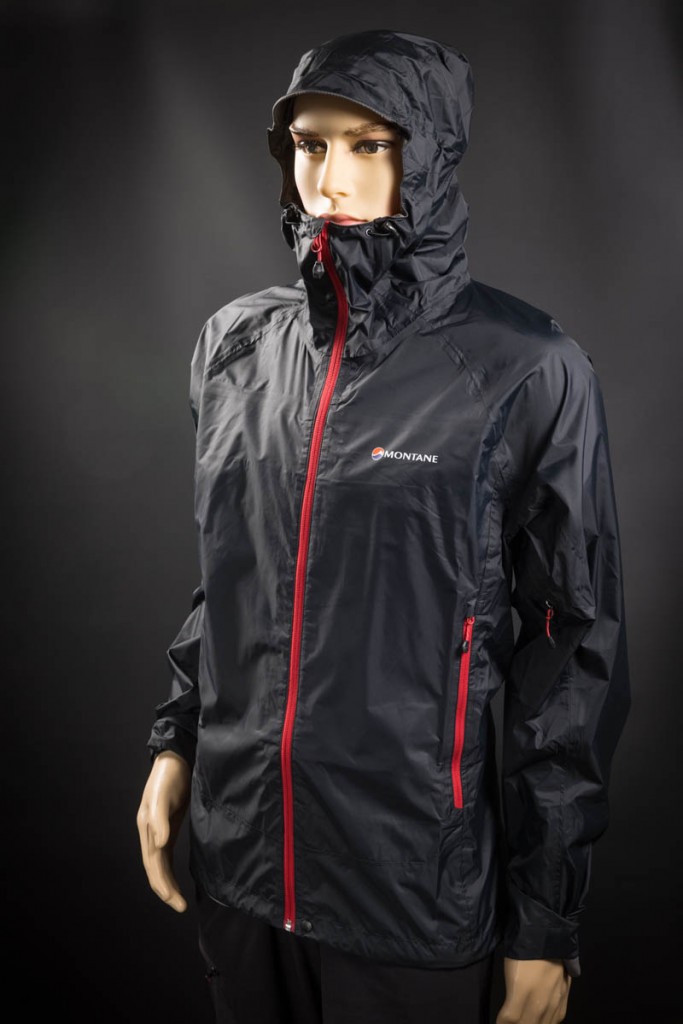
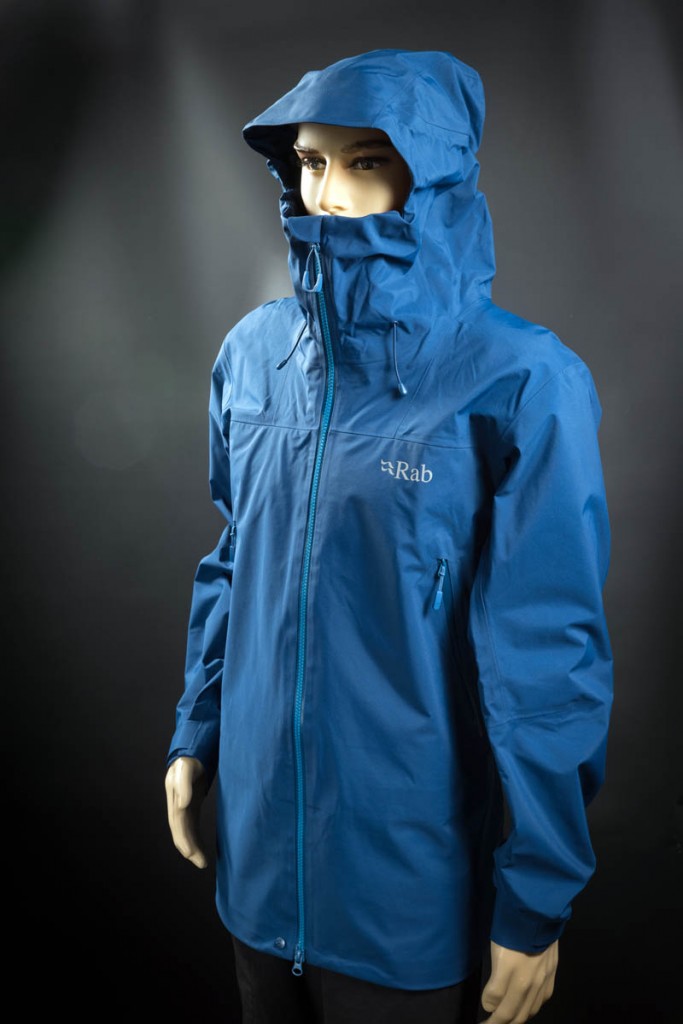
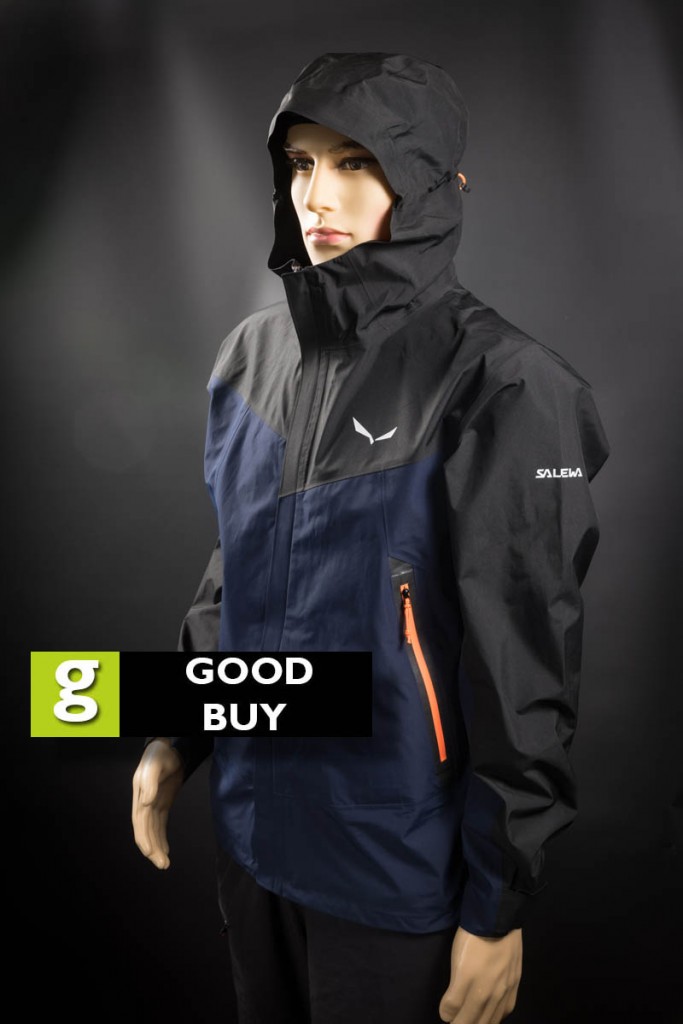
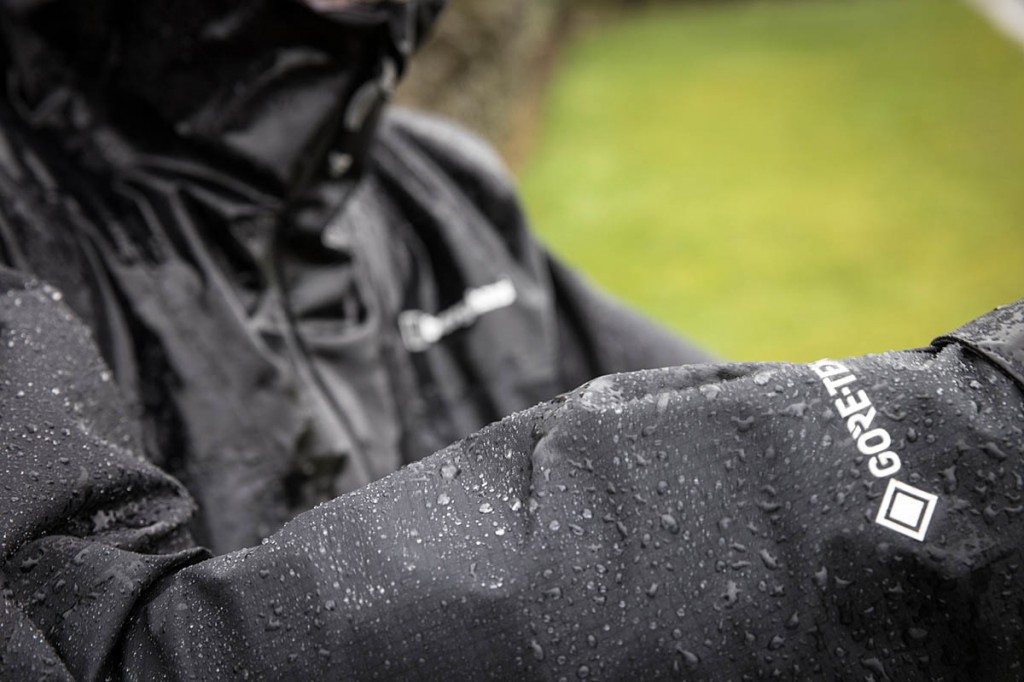
MunroMaiden
12 March 2022Comparing the Craghoppers and Montane jackets, at 10,000mm HH, to some with a 28,000mm rating isn't comparing like with like. If you're going to be spending a full day on Munros in high winds with non-stop rain or sleet, 10,000mm is unlikely to keep you dry. For all the jackets, the comments say "kept out the wind and rain" - but we're not told for how long, never mind what intensity. This could be very misleading for readers with little experience.
Also, breathability depends on what you're wearing underneath the jacket, as well as the jacket itself; it would be helpful to detail that (or preferably to give the ratings, so they can be compared objectively).
Finally, you say the main drawback of the Berghaus was the poorer performance of the hood; I'd say the main drawback is that there isn't a women's version. I'd like to see men-only clothing excluded from comparisons unless there is a women's equivalent that is also tested. I'd also like to know if any of your testers were female? Performance, comfort and sizing issues can be very different between men's and women's versions of clothing. (If you'd like to have a woman tester, I'd be happy to volunteer.)
tatra
26 January 2023Dear MunroMaiden, go "love" yourself.